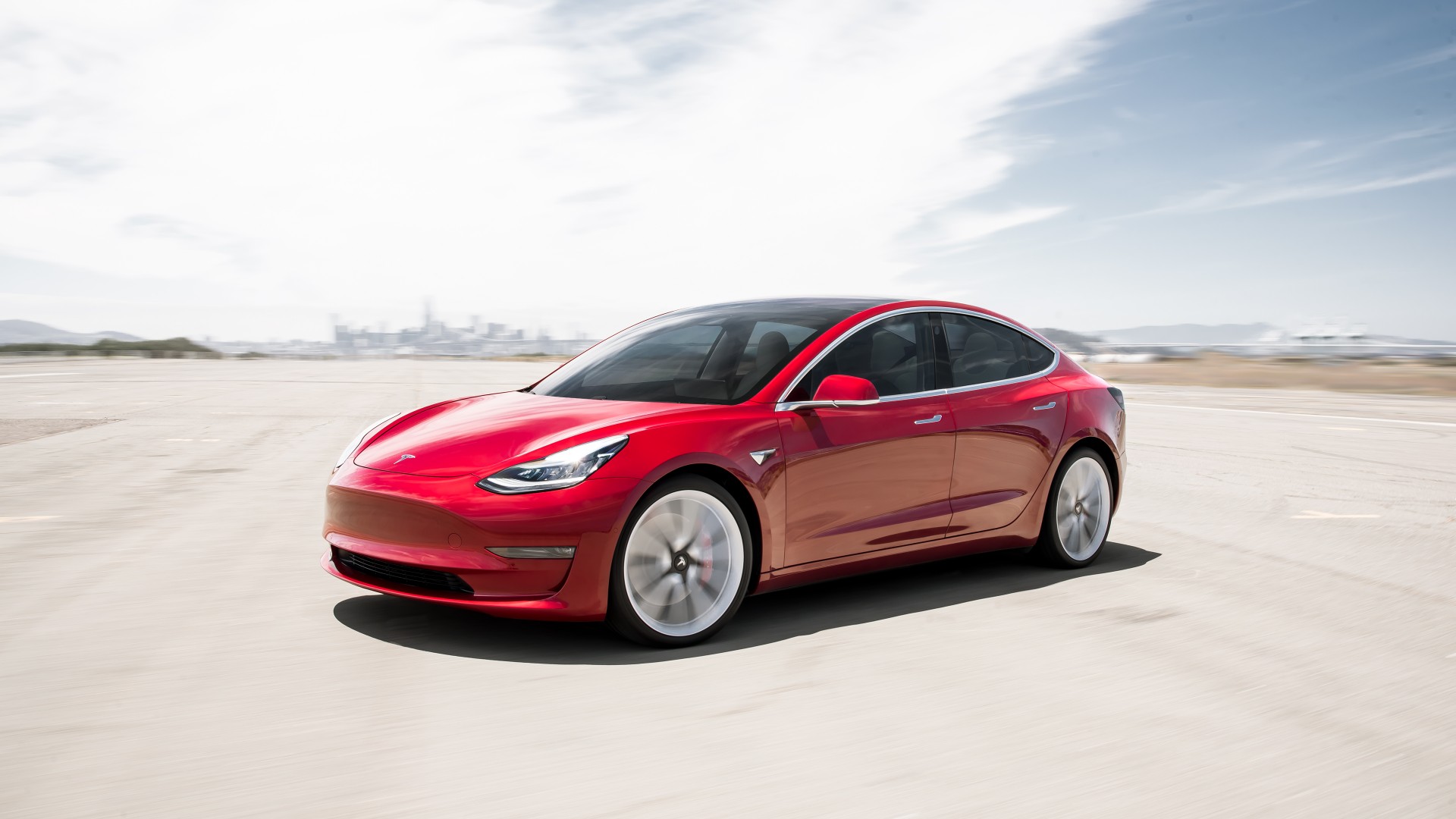
The Tesla Model 3 includes most of the same features you’d find on a well-equipped mainstream model or a basic offering from a luxury brand. All Model 3s come with Tesla’s very advanced entry system, with custom driver profiles.
The 15-inch touchscreen on all Model 3s is basically a giant, very responsive tablet with its own quick 4G connection—one that can be used to provide updates to core car systems. It includes phenomenally quick navigation and mapping abilities, with none of the lag of rival systems, and it responds to voice prompts with natural-language commands just like smartphones.
There’s one big issue that will affect how some use this system: It’s not compatible with Apple CarPlay or Android Auto. The audio system has built-in streaming services, via TuneIn, that let you play radio stations, podcasts, or specific artists/channels, and the latter feature responds very well to natural voice commands.
Another detail about the Model 3 that takes some getting used to is that there’s no keyfob for getting into the vehicle and there’s no ignition or power switch. You merely carry your phone with you; as you approach the vehicle the driver’s door unlocks, and as you get into the vehicle it turns fully on. Exiting the vehicle, as you walk a few paces away, the car switches off and signals that it’s locking up (depending on your menu settings).
You store the RFID keycard that serves as the actual physical key away in a wallet, or at home in a drawer, and the only time you’ll need it is when you add new devices (then it functions as an admin password for the vehicle, essentially).
The Model 3 is also one of the few vehicles on the market that enables full over-the-air updates, not just for the infotainment system but for core vehicle performance and safety systems. Get into the car after an update, and it might accelerate or brake differently than before, or other features like the interior lighting might react a bit differently. Look ahead five or more years, and this is likely another feature that many more vehicles will have.
After several hours with the Model 3 we found glancing to the corner of the touchscreen for the speedometer and warning lights second nature, but it took us a couple of days to stop thinking that there should be a head-up display.
Tesla says that you can charge the battery at a rate of 150 miles of regained range in 30 minutes (or 170 miles for the Long Range model), or via a home-charging rate of about 37 miles per hour.
The new Standard Range Model 3 has a basic interior with cloth seats, base trim, and a base audio system—a combination we haven’t seen yet in person, while the Standard Range Plus upgrades to the premium seat material and the immersive-sound audio system we’ve experienced in other Model 3 sedans—not especially powerful but good for clarity and frequency response.
We award the Model 3 a total of 8 points out of 10 in the feature category, because of its “killer app” entry system, a great tech-feature set, and the sheer lag-free functionality its interface. We even threw in another point to represent Tesla’s knack at customer service, as you have to look long and hard to find any Tesla customer, so far, who’s unhappy with after-sales support. The only demerit we gave it relates to that lack of Apple CarPlay and Android Auto. (Read more about how we rate cars.)
Lots of seemingly normal details in the Model 3 have a learning curve—for instance, the exterior door handles demand that you tease them out with your fingers before pulling the door open, and inside you press a small button to release the door. Adjusting the steering wheel alone takes some fiddling with a menu and then the thumb toggles on the steering wheel.
Review continues below
0 Kommentarer